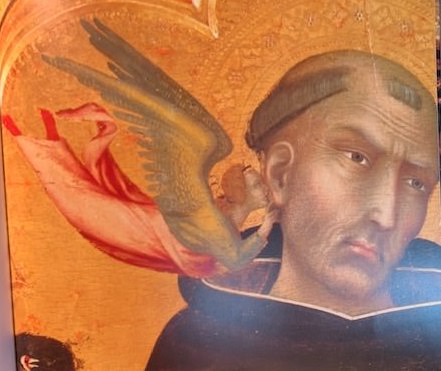To reflect the light, we must allow impressions to truly penetrate us, to achieve the breathing of the True Man. How do we understand this, using the Food Diagram of the Fourth Way?
The Fourth Way food diagram explains that man has three kinds of food. There is the ordinary food we eat, the air we breathe, and impressions.

Mechanical digestion of the food diagram
Food and air are mechanically digested, but impressions are not, due to the fact that man lives his life in the state of sleep from birth to death. When impressions enter a person, they stimulate thoughts and emotions, which in turn may stimulate other thoughts and emotions. By identifying with these thoughts and emotions, the lower self gets its identity, but the energy of impressions is not refined. The associations of thoughts and emotions stay on the same level or become rougher, when one becomes negative. Only when a man starts to divide attention and remember himself, are impressions digested, which is called the first conscious shock.

Conscious ‘digestion’ of the food diagram, the first and second conscious shock
To understand the concept of the digestion of impressions, imagine one rides the subway to work every day. One day, one experiences a state of self-remembering and suddenly one sees that people are truly asleep. Every day one has the experience of seeing people on the subway, but because one is asleep, one does not digest the impressions of people in the subway. This means that they do not connect to one’s inner being, they don’t touch one’s higher self.
One day, while remembering oneself, one truly sees and witnesses a person in imagination. Normally, it would hardly register that the person`s eyes are unfocussed, because one is in imagination oneself. Being in imagination means that one’s attention does not connect with impressions that enter one and one has no self-awareness. Now, however, it creates a deep impression and connects to one’s own experiences and whole being, while one is aware of one’s Self at the same time. There is no doubt that the person’s higher self is asleep. One can almost see what they are thinking. Thinking, however, is too generous a word for this state, because the person is not actively thinking. Rather, thoughts travel randomly through the brain and steal the person’s attention. He or she is like an empty shell.
At the same time, one knows this happens to oneself too, but not now. Now, one is in a completely different state. One sees a person completely absorbed in a video game on his phone and it is crystal clear they don’t have self-awareness. One’s daily impressions transform into an emotional quality related to being present. One’s own higher self is present. This is because the energy of the newly refined impressions is the fuel one needs for the higher self to come into existence and stay present for a while.
As physical breath makes the physical body alive, so digestion of impressions makes the higher self alive. For this reason, we can see the digestion of impressions as the true breath or breath of life. The miracle of experiencing one’s true self creates an abundance of energy in the intellectual part of the emotional center. This energy wishes to find a way of expressing itself, because naturally, one would like to let other people know that they also can have this miraculous experience. Depending on the person, this miraculous experience, which sharply stands out from one’s usual every day experience, may find expression in a poem, a painting, a play, a book, a sculpture or piece of music. This is the original meaning of art: to express an experience of a higher state.
Through art, man creates the alliance between his body and his soul. — Simone Weil, French mystic (1909-1943)
All art is concerned with coming into being. – Aristotle
The expression of this energy, whatever form it takes, we can see as an exhalation. The digestion of impressions is like an inhalation. When one ‘inhales’ and digests impressions, the presence of the awakened self is like a strong inner light. It is the breathing of the true man. The expression of this experience in an art form is like an exhalation or a reflection of this light.
The Chinese character for true breath「息」is made up of the characters for Self「自」and heart「心」. The Self「自」and the heart「心」sustaining it, is the true breath「息」. — The Secret of the Golden Flower
Activating the intellectual part of the emotional center, we refine impressions so that they touch and enter the higher self. This experience than returns to the King of Hearts and finds an expression in some external work of art.
Walther Sell is the author of a website on Oriental esoteric teachings and the Fourth Way. For more, see his page, Inner Journey to the West and prior articles from Walther for FourthWayToday.org: https://fourthwaytoday.org/author/walther-sell/, such as:
